Related Research Articles

Jean Louis Marie Le Pen is a French far-right politician who served as President of the National Front from 1972 to 2011. He also served as Honorary President of the National Front from 2011 to 2015.

Jean-Antoine Houdon was a French neoclassical sculptor.

Joseph-Marie Vien was a French painter. He was the last holder of the post of Premier peintre du Roi, serving from 1789 to 1791.

Jean-Jacques Annaud is a French film director, screenwriter and producer, best known for directing Quest for Fire (1981), The Name of the Rose (1986), The Bear (1988), The Lover (1992), Seven Years in Tibet (1997), Enemy at the Gates (2001), Black Gold (2011), and Wolf Totem (2015).
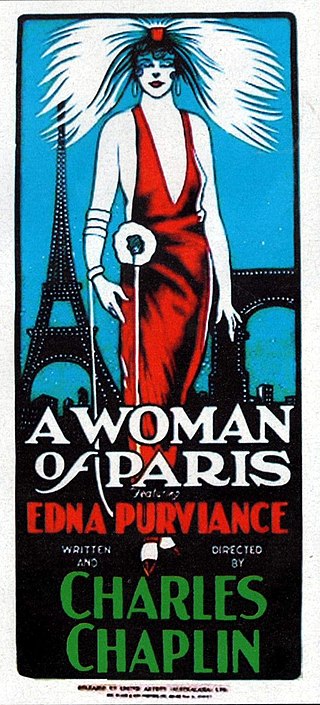
A Woman of Paris is a feature-length American silent film that debuted in 1923. The film, an atypical drama film for its creator, was written, directed, produced and later scored by Charlie Chaplin. It is also known as A Woman of Paris: A Drama of Fate.

Henri Julien Félix Rousseau was a French post-impressionist painter in the Naïve or Primitive manner. He was also known as Le Douanier, a humorous description of his occupation as a toll and tax collector. He started painting seriously in his early forties; by age 49, he retired from his job to work on his art full-time.

Joseph Laniel was a French conservative politician of the Fourth Republic, who served as Prime Minister for a year from 1953 to 1954. During the middle of his tenure as Prime Minister Laniel was an unsuccessful candidate for the French Presidency, a post won by René Coty.

Anne-Louis Girodet de Roussy-Trioson, also known as Anne-Louis Girodet-Trioson or simply Girodet, was a French painter and pupil of Jacques-Louis David, who participated in the early Romantic movement by including elements of eroticism in his paintings. Girodet is remembered for his precise and clear style and for his paintings of members of the Napoleonic family.

Jean-Marc Nattier was a French painter. He was born in Paris, the second son of Marc Nattier (1642–1705), a portrait painter, and of Marie Courtois (1655–1703), a miniaturist. He is noted for his portraits of the ladies of King Louis XV's court in classical mythological attire.
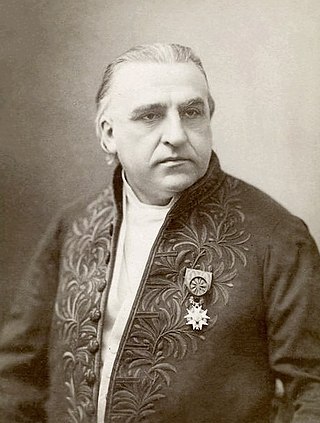
Jean-Martin Charcot was a French neurologist and professor of anatomical pathology. He worked on hypnosis and hysteria, in particular with his hysteria patient Louise Augustine Gleizes. Charcot is known as "the founder of modern neurology", and his name has been associated with at least 15 medical eponyms, including various conditions sometimes referred to as Charcot diseases.
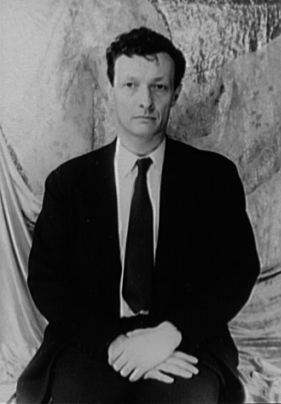
Jean-Louis Bernard Barrault was a French actor, director and mime artist who worked on both screen and stage.

Jean-Marie Lehn is a French chemist. He received the Nobel Prize in Chemistry together with Donald Cram and Charles Pedersen in 1987 for his synthesis of cryptands. Lehn was an early innovator in the field of supramolecular chemistry, i.e., the chemistry of host–guest molecular assemblies created by intermolecular interactions, and continues to innovate in this field. As of January 2006, his group has published 790 peer-reviewed articles in chemistry literature.
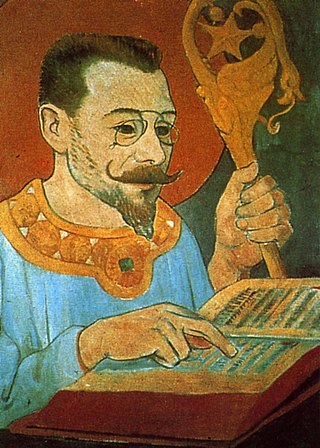
Paul-Élie Ranson was a French painter and writer associated with Les Nabis.

John II of Alençon was a French nobleman. He succeeded his father as Duke of Alençon and Count of Perche as a minor in 1415, after the latter's death at the Battle of Agincourt. He is best known as a general in the Last Phase of the Hundred Years' War and for his role as a comrade-in-arms of Joan of Arc.
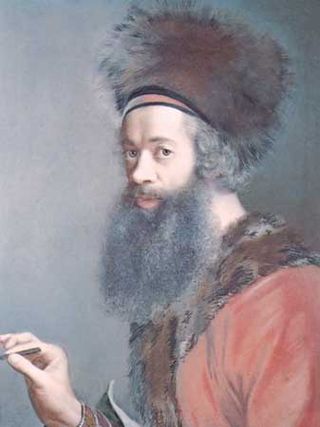
Jean-Étienne Liotard was a Swiss painter, art connoisseur and dealer. He is best known for his portraits in pastel, and for the works from his stay in Turkey. A Huguenot of French origin and citizen of the Republic of Geneva, he was born and died in Geneva, but spent most of his career in stays in the capitals of Europe, where his portraits were much in demand. He worked in Rome, Istanbul, Paris, Vienna, London and other cities.
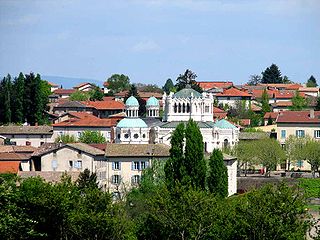
Ars-sur-Formans is a commune in the Ain department in the Auvergne-Rhône-Alpes region of eastern France.
Events from the year 1904 in France.
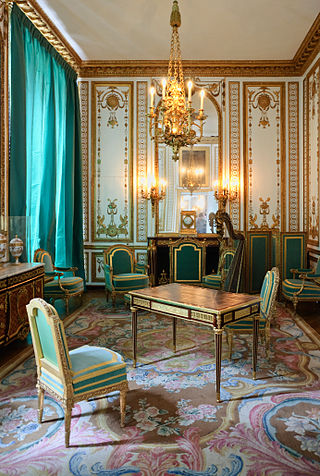
Louis XVI style, also called Louis Seize, is a style of architecture, furniture, decoration and art which developed in France during the 19-year reign of Louis XVI (1774–1793), just before the French Revolution. It saw the final phase of the Baroque style as well as the birth of French Neoclassicism. The style was a reaction against the elaborate ornament of the preceding Baroque period. It was inspired in part by the discoveries of Ancient Roman paintings, sculpture and architecture in Herculaneum and Pompeii. Its features included the straight column, the simplicity of the post-and-lintel, the architrave of the Greek temple. It also expressed the Rousseau-inspired values of returning to nature and the view of nature as an idealized and wild but still orderly and inherently worthy model for the arts to follow.

Jean-Baptiste Marie Pierre was a French painter, draughtsman and administrator.
References
- ↑ ABC-Clio Information Services (1983). Artbibliographies Modern. Clio Press. p. 82. Retrieved 2008-10-27.